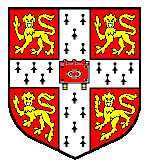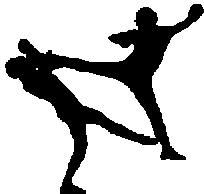 |
|
 |
A brief history of Savate
Adapted from English Boxing and the 'French Connection' - by Ollie Batts (previously published in the UK, the author reserves all rights)
According to Michel Delahaye, in his book La Boxe Française (Ergo Press, April 1989), the French style of fighting with the hands and feet, known as Boxe Francaise (French Boxing), was assimilated by Charles Lecour (1808-94), the son of a French baker, in 1832. Prior to that time, a method of fighting existed in old Paris where the combatants kicked one another with their everyday shoes on. The common name for a street shoe at that time was 'savate'(pronounced sa-vat), which simply meant 'old shoe'. The name savate, therefore, became associated with this particular method of street-fighting.
Those early street brawls did not stop at kicking however, as gouging, wrestling and headbutting are also said to have taken place (just like in England today!). The first person to make an attempt to systematise savate was Michel Casseux (aka) Pisseux (1794-1869), who opened the first 'official' Salle (training establishment) in 1825. Unfortunately, savate was still recognised by many as a style of street-fighting, and therefore, initially only attracted those of dubious means and character.
At the same time, another foot-fighting system existed in and around the old southern dockyards of France, and on board sailing ships. This, sailors and dock-workers, style of fighting was known as jeu marseillais (sport Marseille). A comparison of the two kick-fighting methods shows that the kicks used in jeu marseillais were often aimed and delivered much higher than in savate, and the hands were commonly used for support and balance. This included placing the hand, or hands, on the floor, or grabbing hold of any convenient handrail or object, whilst lashing out with the feet. This would not be such a strange thing to do for two people who might be fighting on wet and slippery dock sides, or the swamped and rolling decks of sailing ships. Towards the end of the 1820's, and perhaps in an attempt to change the general public's perception of these fighting arts, the name chausson (a sailor's deck shoe) began to be used.
A critical turning point for the French kicking styles was reached in 1830 (although some records suggest a later date), after Charles Lecour, a one time pupil of Michel Casseux, was said to have suffered defeat at the hands of an English bareknuckle pugilist named Owen Swift (see 1 below). The traditional 'good old English method of deciding a quarrel' had always been to punch one another with bareknuckles, and the English despised the French method of using the feet for kicking, considering it to be unmanly, foreign and cowardly. As French fighters had, until that time, really only used their hands for blocking, parrying and slapping, it became immediately obvious that they were at a distinct disadvantage when fighting at close range against skilled fist-fighters. Lecour recognised these limitations and undertook English boxing lessons from another English pugilist named Jack Adams. After a period of two years, Lecour assimilated the French kicking methods and combined them with English boxing to create la boxe francaise.
Across the Channel English boxing, or pugilism, had of course already been in existence for well over two centuries. The first newspaper report of a Bare Knuckle bout appeared in the Protestant Mercury, January 1681. This was between the Duke of Albemarle's footman and a butcher, which the latter is said to have won.
James Figg (1695-1734) [or 1740 according to Pierce Egan's 'Boxiana'], opened his Academy, known as Figg's Amphitheatre, in Tottenham Court Road London, in 1719, and claimed the title 'Champion of England' from then until about 1730. Jack Broughton (1705-89), a protege of Figg, later became known as the "Father of English Boxing" after he produced boxing's very first rules on August 16, 1743. These rules were probably drawn up as a result of his tragic fight two years previously with George Stevenson 'the Coachman' (a 'jarvey', or Hackney-coach driver). They lasted for almost a century before being eventually replaced by the Pugilistic Association's 'Rules of the London Prize-Ring' in 1838. These 'New Rules' were later revised in 1853 and again in 1866. Broughton died at a ripe old age of nearly 85 and was said, by some, to be buried in his local church, St Mary-at-Lambeth, and by others, in Westminster Abbey.
As well as punching with their bareknuckles, early English fighters frequently threw their opponent with the trusted 'cross-buttock' throw. This method of downing one's opponent, although entirely legal, was particularly punishing if an unscrupulous fighter then fell, with all his weight, onto the other's stomach and ribs. Although considered to be a foul, this action could easily be passed off as 'unintentional'. Some fighters were also quick to gouge an adversary's eye, should the referee's attention be diverted for a moment. In the early days many pugilists preferred to wear their hair long, however, since 1795, when the referee adjudged it fair for Jackson to hold Mendoza by the hair with one hand whilst hitting him with the other, most pugilists adopted the habit of keeping their hair cropped short. There were rules, both written and unwritten, that were considered unmanly, and were therefore never breached, such as 'kicking', 'hitting below the belt', and, 'hitting an opponent who was down'.
As soon as a fighter went down, and for whatever reason, the round ended. This explains why some fights were recorded with a great number of rounds, they weren't timed, as is the case in modern-day boxing. Fighters then had just thirty seconds to recover. During the break, each pugilist sat on the upraised knee of their 'second' whilst being given water by another attendant, known as a 'bottleman'. At the end of the thirty seconds, both fighters were given another eight seconds to toe the 'scratch' line in the centre of the ring. If a fighter failed to 'come up to scratch' (yes that's where the saying comes from!) they were regarded as beaten. Until the 1838 Rules of the Pugilistic Association, attendants often carried their fighter to the 'scratch' and held them upright to restart. As soon as the next round started, a fighter might receive just one blow and fall and that would be the end of another round. If a fighter fell without being struck at any time he was in danger of forfeiting the fight.
Welsh-born, John Graham Chambers (1843-83), founded the 'Amateur Athletic Club', in 1866, and drew up a new set of rules, known as the 'Queensberry Rules', which were first published in 1867. These rules gained their name after being sanctioned by John Sholto Douglas, 8th Marquess of Queensberry (1844 - 1900), who Chambers had met and befriended at Magdalene College in Cambridge. Interestingly, Chambers was aged 24, and Sholto Douglas was just 23 at the time. After these new rules were published, the old 'Prize-Ring' was effectively finished off in Britain, although there are reports of occasional bareknuckle fights up to 1885. In reality, the Golden Era for the old English prize-ring spanned about 150 years - during which time there were more than 7000 fights recorded - from the time of James Figg, until Jem Mace's departure to America in the late 1860's. There, bareknuckle fights continued to take place for at least another twenty years.
At a time when old English boxing (pugilism) was going into decline, boxe francaise was becoming more and more established. Due to the efforts of one man in particular, Joseph Charlemont (1839 - 1914), the French kick-boxing art reached it's pinnacle of recognition, respectability and social acceptance towards the end of the 1800's, drawing interest from all members of French society, including the nobility.
By then, the French were claiming their system to be superior to la boxe anglaise, and they made several attempts over the years to prove their case by organising a number of contests. The English, on the other hand, viewed such contests as a bit of a novelty (like boxing versus wrestling bouts today) and did not really give them any degree of credibility. Towards the end of the 19th century, the French arranged a contest to supposedly decide 'once and for all' which system was superior. They chose their very top man, Charles Charlemont (1862 - 1942), son of Joseph Charlemont. His opponent was Jerry Driscoll, an ex-champion boxer in the English Navy. The fight took place on 28th October 1899 and became a shambles from the start. In round one Driscoll protested loudly that Charlemont had bit him. There was an immediate uproar and the match failed to restart for several minutes. When it did, both fighters clinched several times and for some reason the match was interrupted again. The French referee (yes of course, did you expect a neutral?), Monsieur Clercrampal, said that he didn't want to go on! Eventually they persuaded him to do so - he immediately counted the first round as two!
The fight eventually ended in round eight, with Driscoll clutching his groin. According to the well known English referee, Bernard John Angle of the National Sporting Club, in his book 'My Sporting Memories' London, 1925, "Driscoll did not know what he was taking on" when he agreed "to meet the Frenchman at his own game..." Angle also said that, "The contest ended in Jerry being counted out to a blow in the groin from the Frenchman's knee." He further alleged that "the timekeeper saved Charlemont several times." After the fight Driscoll bore no grudges, considering the blow to have been "an accident." the French, of course, claimed victory to their man by stoppage, following a round-kick (fouette median) to Driscoll's stomach.
Although now claiming the superiority of their system, Charlemont later refused "utterly and categorically" the challenge laid down by the very much younger Al McCoy (1894 - 1966), the American middleweight champion, stating that he (Charlemont) was then a "teacher, not a fighter". McCoy later became World middleweight Boxing Champion, on 6th April, 1914, and he held the World title until 14th November, 1917.
La boxe francaise later had the distinction of going on to be the demonstration sport in the 1924 Paris-based Olympic Games. Sadly, the first and second World Wars accounted for many of the top professeurs and practitioners. As a result, la boxe francaise verged on extinction for a number of years. Fortunately, the art has made a slow but steady recovery in recent years. In addition to France, there are currently groups in the Britain, and around the world, who are attempting to promote this effective and fascinating fighting art. Nowadays the system is known as boxe francaise - savate or, more simply, as Savate.
1. Interestingly, there is no record of this fight in Swift's own bibliography 'The HandBook To Boxing' by Renton Nicholson, London, 1840. Swift later retreated to France, in 1838, after his fatal fight with Will Phelps ("Brighton Bill"). The fight took place near Royston, Herts., for 50 pounds a-side (each) and lasted 1 hour 35 minutes (85 rounds). This was Swift's second fight in which an opponent had died as a result, the first being Anthony Noon in 1834, taking place near Andover, 73 rounds for 50 pounds a-side.
2. The 'modern Olympic Games' were said to have been revived by the French Baron Pierre de Coubertin (1863 - 1937) in 1894, with the 'first' meeting being held in Athens in 1896. What is not so well recognised, is the fact that Captain Robert Dover started his 'famous Olimpic Games' in 1612. These were held, continuously, each Whitsun, for 240 years, near Chipping Campden. These games have again been revived in more recent years.